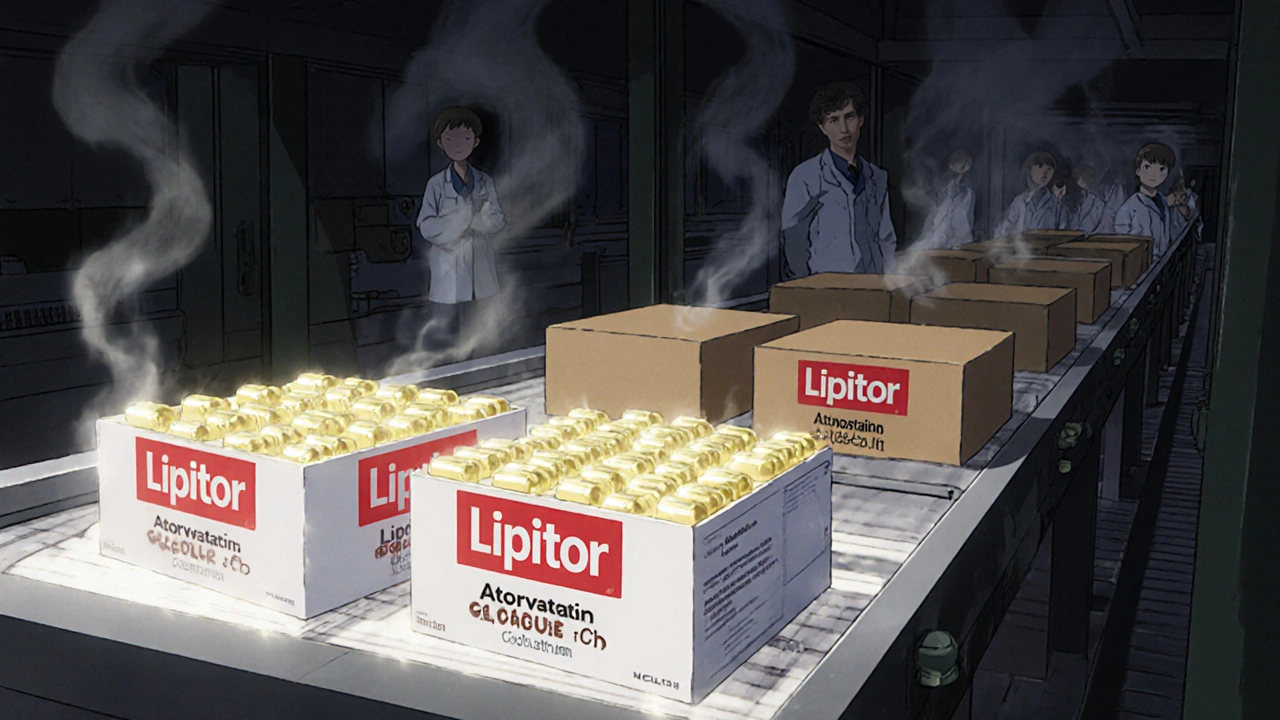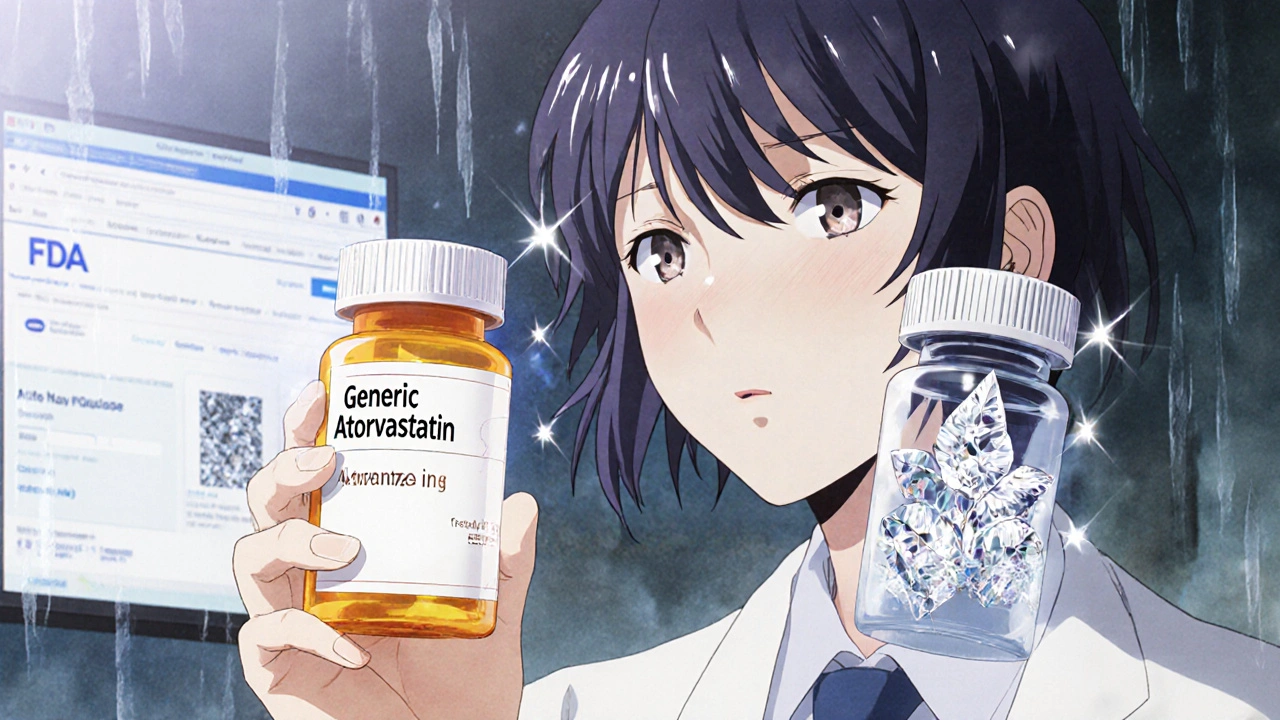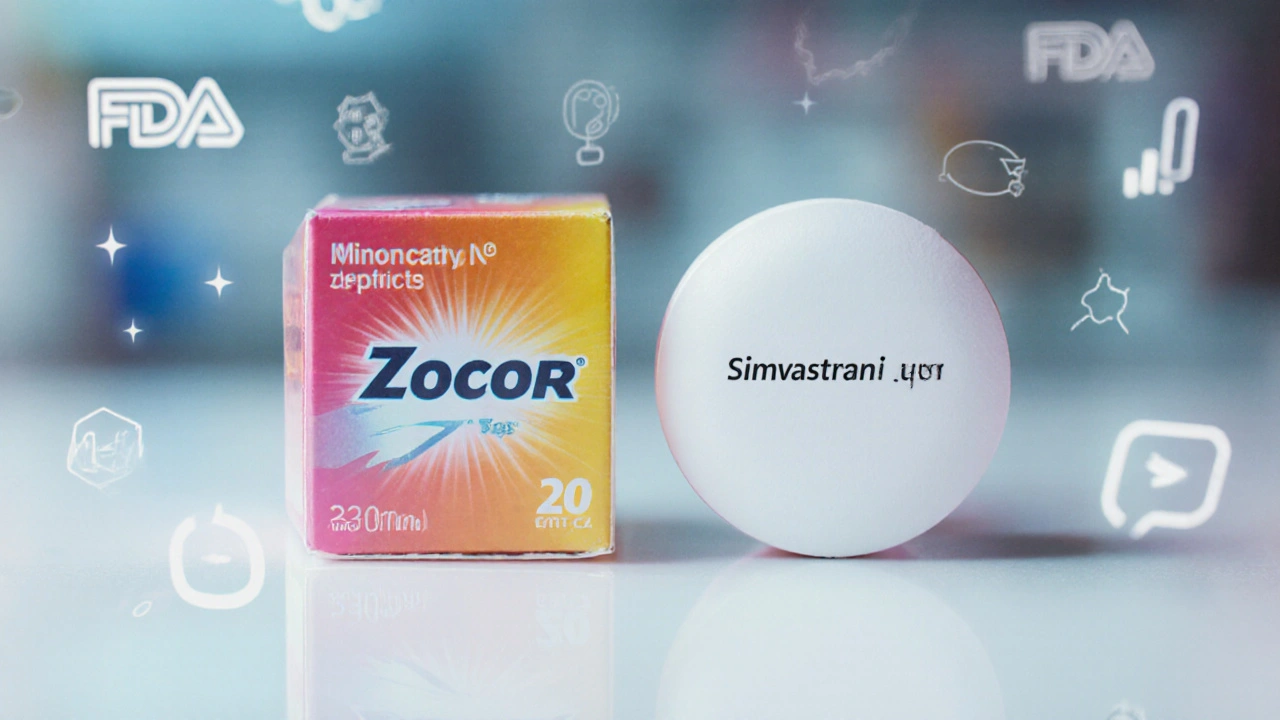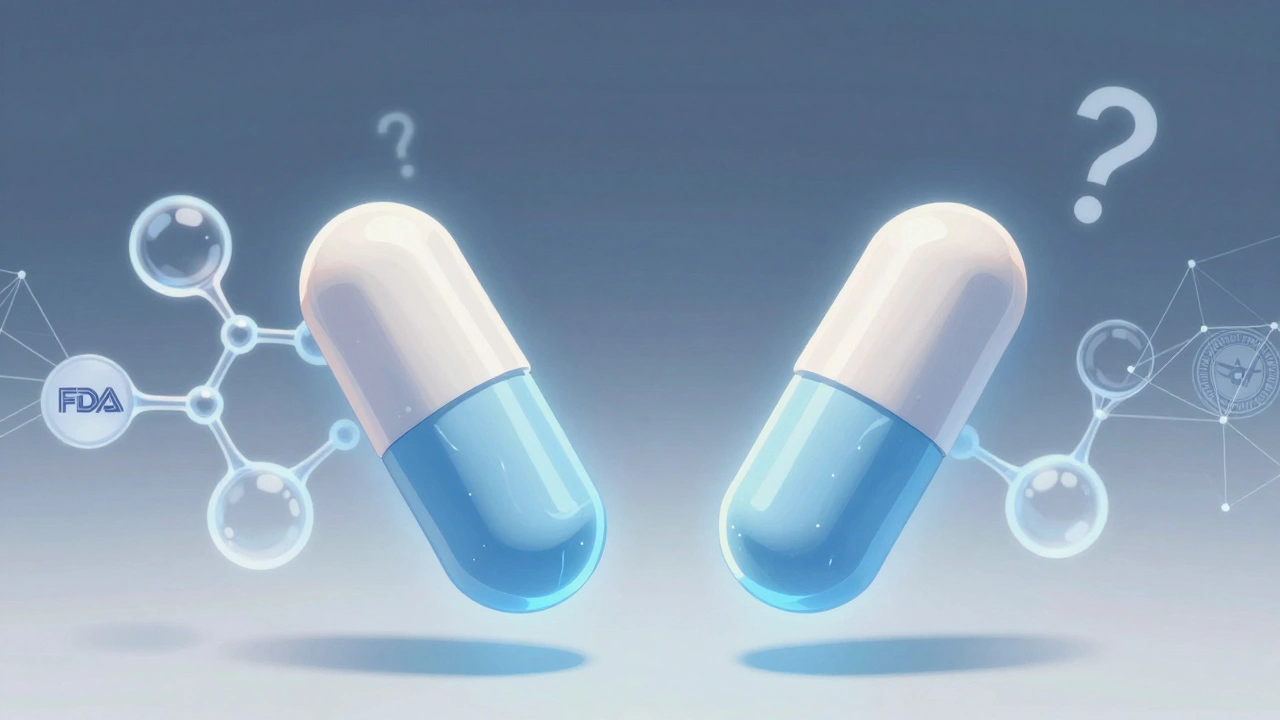When your doctor prescribes a brand-name medication, you might assume the only cheaper option is a traditional generic. But there’s another kind of generic that’s not listed on most pharmacy shelves - and it’s actually the exact same pill, capsule, or injection as the brand, just without the brand name on the bottle. This is an authorized generic. And understanding the difference between it and a regular generic could save you money - or even prevent a bad reaction.
What Exactly Is an Authorized Generic?
An authorized generic is not a copy. It’s the real thing - the same drug made by the same company that makes the brand-name version. The only difference? No brand name on the label. No fancy packaging. No marketing. Just the same active ingredients, the same inactive ingredients, the same manufacturing process, and the same quality control. The U.S. Food and Drug Administration (FDA) defines it clearly: an authorized generic is a brand-name drug sold under a different label, without the trademark or brand name. It’s the exact same product that came out of the same factory, just repackaged. You might get it from a pharmacy counter labeled as "Simvastatin 20 mg" - but if it’s an authorized generic, it’s chemically identical to Zocor. These drugs are approved under the original brand’s New Drug Application (NDA). That means they skip the whole Abbreviated New Drug Application (ANDA) process that traditional generics go through. No need to prove bioequivalence. No waiting for patent expiration to file paperwork. The brand company just decides to sell the same drug under a different label - and the FDA lets them.How Authorized Generics Are Made and Who Makes Them
You might think generics are made by small, independent drugmakers. But authorized generics are often made by the brand company itself - or by a subsidiary they own. Pfizer’s Greenstone LLC, Prasco Laboratories, and Patriot Pharmaceuticals are the three biggest players in this space. Together, they handle nearly 80% of all authorized generics in the U.S. Here’s how it works: A company like Pfizer makes Lipitor. They sell it under the brand name. Then, when the patent is about to expire, they launch a version of Lipitor without the name on the bottle. It’s still made in the same facility, with the same equipment, by the same team. The only change? The label says "Atorvastatin Calcium" instead of "Lipitor." Sometimes, the brand company licenses the right to make the authorized generic to a third party. But even then, they’re still using the original formula, the same batch records, and the same quality standards. That’s why authorized generics don’t appear in the FDA’s Orange Book - the official list of approved generics. They’re not listed there because they’re not generics in the regulatory sense. They’re the brand drug, just sold under a different name.How Authorized Generics Differ from Traditional Generics
This is where things get confusing - and why so many patients don’t know what they’re getting. Traditional generics are copies. They must contain the same active ingredient, strength, dosage form, and route of administration as the brand. But they can - and often do - have different inactive ingredients. That includes fillers, dyes, binders, and coatings. These don’t affect how the drug works, but they can affect how your body reacts to it. For example, someone with a corn allergy might react to a generic version of a medication that uses cornstarch as a filler, while the brand version uses potato starch. Or someone with a sensitive stomach might get nausea from a different coating on the pill. These aren’t rare cases. A 2022 survey by the National Community Pharmacists Association found that 67% of pharmacists reported patients specifically asking for authorized generics because they had bad reactions to traditional ones. Authorized generics avoid this entirely. They have the exact same inactive ingredients as the brand. No substitutions. No surprises. If you’ve been on a brand-name drug for years and your body is used to it, switching to a traditional generic might feel different - even if it’s "therapeutically equivalent." An authorized generic? You won’t notice a difference.Why Authorized Generics Aren’t Listed in the Orange Book
The FDA’s Orange Book is the go-to resource for pharmacists to check if a generic is interchangeable with a brand. But authorized generics aren’t in it. Why? Because they’re not approved under an ANDA. They’re approved under the original NDA. The Orange Book only lists drugs that went through the generic approval process. This creates a real problem for pharmacists. If you’re looking up a drug and see no generic listed, you might assume there isn’t one. But there could be an authorized generic available - just not in the database. You have to know to check the FDA’s separate List of Authorized Generic Drugs, which is updated monthly and available online. Pharmacy systems often don’t distinguish between authorized generics and traditional generics either. So even if your pharmacist knows the difference, your insurance portal might still treat the authorized generic as a brand drug - and charge you a higher copay.
Cost Differences: What You’ll Actually Pay
Both types of generics cost less than the brand. But how much less? Traditional generics can be dirt cheap - sometimes under $5 for a 30-day supply. Authorized generics usually cost a bit more, but still 15% to 30% less than the brand. Why? Because they’re not competing with other generics. The brand company controls the supply, so they don’t have to slash prices to beat competitors. Here’s the catch: insurance companies sometimes don’t treat authorized generics like generics at all. Some pharmacy benefit managers (PBMs) classify them as "brand equivalents" because they’re made by the same company. That means you could pay a higher copay than you would for a traditional generic - even though the drug is identical to the brand. If you’re paying out of pocket, authorized generics are often the best value. You get the brand’s exact formula at a discount. If you’re on insurance, always ask your pharmacist: "Is this an authorized generic?" and check your copay. You might be overpaying.Market Strategy: Why Brands Launch Authorized Generics
It sounds counterintuitive: why would a brand company help kill its own sales? The answer is competition. When a patent expires, the first traditional generic maker gets 180 days of exclusive rights to sell the generic. That’s a huge financial incentive. But if the brand company launches an authorized generic at the same time, it can undercut that exclusivity. The FDA allows this. And it happens often. A 2022 Health Affairs study found that 38.5% of brand-name drugs with expired patents had authorized generics launched alongside the first traditional generic. This practice can discourage other companies from challenging patents - because why spend millions on legal battles if the brand company is already selling the same drug at a lower price? Critics call this a loophole. Supporters say it gives patients faster access to lower-cost versions. Either way, it’s a real strategy in the pharmaceutical market.What Patients Should Do
If you’re taking a brand-name drug and want to save money:- Ask your pharmacist: "Is there an authorized generic for this?"
- Check the FDA’s List of Authorized Generic Drugs online. Search by the brand name or active ingredient.
- If you’ve had side effects with traditional generics, ask for the authorized version - it’s your best shot at avoiding a reaction.
- Compare your copay. Sometimes the authorized generic costs more than the traditional one. But if you’re paying out of pocket, it’s often the better deal.
- Don’t assume "generic" means cheaper. Sometimes "authorized generic" means better.

What Pharmacists and Providers Need to Know
For healthcare professionals, the confusion around authorized generics isn’t just a patient issue - it’s a safety issue. Electronic health records often don’t distinguish between authorized generics and traditional generics. That can mess up medication reconciliation, especially during hospital admissions or transitions of care. If your chart says you’re on "Atorvastatin," but you’ve been on the authorized generic of Lipitor, and your new doctor sees "Atorvastatin" as a traditional generic, they might think you’re switching formulations - and that could lead to unnecessary changes. Always document the exact product you’re prescribing or dispensing. If it’s an authorized generic, note it. If your system doesn’t let you, write it in the comments.What’s Next for Authorized Generics?
The market for authorized generics is growing. As of September 2023, there were 1,872 authorized generic products available in the U.S. - covering 467 unique active ingredients. That’s up from just a few hundred a decade ago. Specialty drugs - like those for cancer, autoimmune diseases, or rare conditions - are especially likely to have authorized generics. Why? Because formulation matters more. Even tiny differences in inactive ingredients can affect how these complex drugs are absorbed. The FDA is under pressure to study their impact on competition. A 2022 federal law requires them to report to Congress by December 2024. Meanwhile, industry analysts predict authorized generics will make up 15.3% of the U.S. generic drug market by 2027. They’re not going away. And as more patients and providers learn the difference, they’ll become a smarter choice - not just for savings, but for safety and consistency.Common Questions About Authorized Generics
Are authorized generics as safe as brand-name drugs?
Yes. Authorized generics are made by the same company, in the same facility, with the same ingredients and quality controls as the brand-name drug. The FDA considers them therapeutically equivalent because they are the exact same product - just without the brand name on the label.
Can I switch from a brand-name drug to an authorized generic without any issues?
Absolutely. Since the active and inactive ingredients are identical, switching to an authorized generic should not change how the drug works in your body. Many patients who’ve had bad reactions to traditional generics find that authorized generics work perfectly.
Why doesn’t my insurance cover authorized generics like other generics?
Some pharmacy benefit managers (PBMs) classify authorized generics as brand-name drugs because they’re made by the same company. This can result in higher copays. Always check your plan’s formulary or ask your pharmacist to confirm how it’s categorized.
How do I know if my medication is an authorized generic?
Check the label for the brand name - if it’s missing, it might be an authorized generic. You can also search the FDA’s List of Authorized Generic Drugs using the active ingredient or brand name. Your pharmacist can also look it up in their system or contact the manufacturer.
Are authorized generics available in Australia?
Australia’s Therapeutic Goods Administration (TGA) doesn’t have an official category for authorized generics like the FDA does. Most lower-cost versions sold in Australia are traditional generics approved under their own applications. However, some U.S.-made authorized generics may be imported privately, but they’re not commonly available through the Pharmaceutical Benefits Scheme (PBS).



